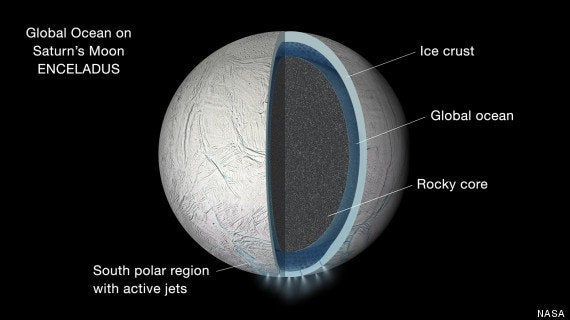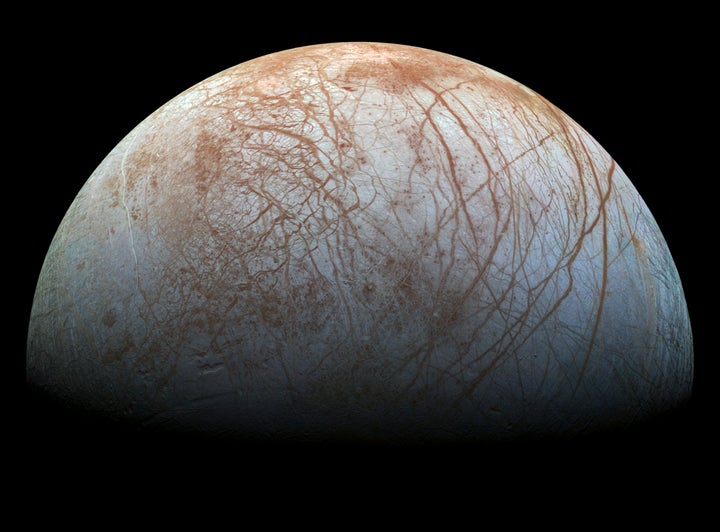NASA has revealed that Saturn’s moon Enceladus is sending vast plumes of water that contain hydrogen out into space, confirming that it is in fact able to support life.
If true, it could be the first example of life developing outside of Earth.

Much like the hydrothermal vents on Earth that support their own extraordinary ecosystem, Enceladus it seems is also sending huge hot plumes of hydrogen through its subsurface ocean and out into space.
The discovery of hydrogen within these plumes is an important one as it could be a potential source of energy for microbes down on the ocean surface of the moon.
The reaction scientists are looking for is called serpentinisation. This takes place when seawater is pulled through, and reacts with rocks that are rich in iron and magnesium.
As the rocks take in the water, a byproduct of this is hydrogen, a powerful source of energy that can be harnessed for metabolism by certain types of microbes.
Despite its appearance, Enceladus is an ‘ocean world’ Protected by a vast ice shell, there lies beneath a vast ocean that covers the entire surface of the moon.
Enceladus is able to retain a liquid ocean thanks to the heat generated from Saturn’s gravitational hold on the moon
It is deep within this ocean that NASA believes could lie the first example of organisms to evolve outside of Earth.

At this juncture it’s important to note that there are still some key components missing from the agreed ingredients list needed for life.
For starters Cassini was unable to measure the levels of phosphorus and sulphur, two key pieces of the puzzle that will need to be solved.
While Cassini is reaching the end of its life, NASA has already confirmed that it will be sending a probe to Europa, another ‘ocean world’ orbiting Jupiter that has many of the same characteristics as Enceladus.

For Saturn’s moon though there are plans in place to send a new set of highly-sensitive spectrometers in 2026 which they hope will be able to analyse the vast plumes in far greater detail.
